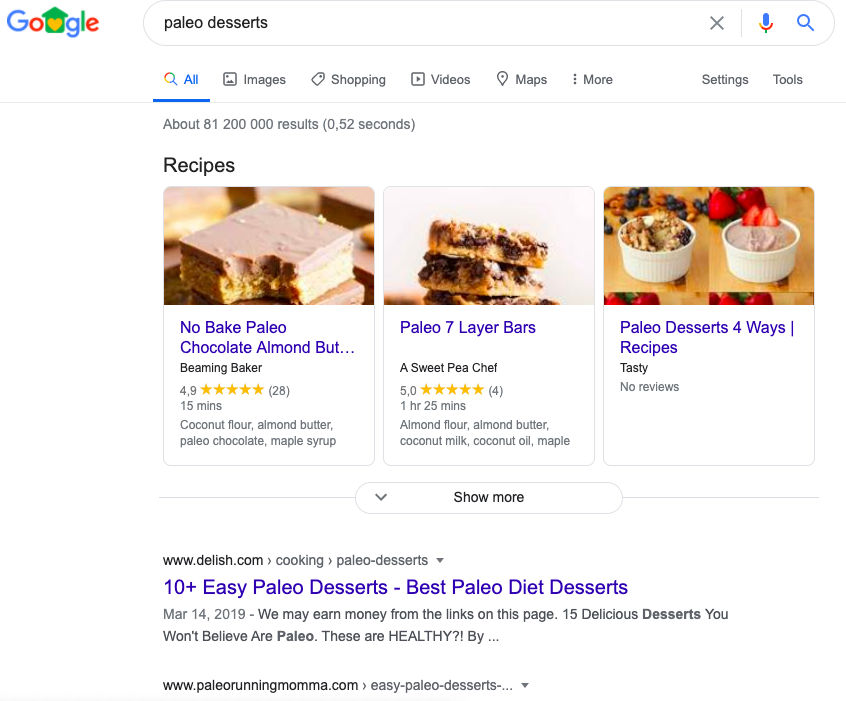07 May How To Increase Your Website’s Traffic & SEO in 2020
Before I begin, let me warn you that this article is not going to reveal any magic tricks that would get you to the first page of Google search results overnight. These kinds of things require effort, patience and persistence.
At the same time, this post is not about any very high-level stuff. Instead, everything I’m about to discuss is super tactical and actionable. Anyone who knows the basic of using the Internet can apply these tricks. You don’t need to be a programmer or a hard-core coder to do the basic SEO. So keep reading.
Let’s face it, SEO can be hard, and it’s even harder when you read the same advice over and over again. You know the stuff I’m talking about. You must have heard of the common SEO tactics like optimizing your title tags, sharing your content on social media, publishing great content etc. These suggestions are not completely useless, but they do not rocket your site to the top of Google. Why? Because everyone with a website is following the same advice. So to rank above them, you need to do something completely different, which is exactly what I’m going to walk you through right now.
If you want a quick summary of all the strategies that I’ll be discussing in this post, you can watch the short video given below.
Find an Opportunity Keyword
Starting with step number 1, find an opportunity keyword. An opportunity keyword is like a regular keyword but better. I’ll explain. You probably noticed that Google’s first page is packed with more stuff than ever before. For example, take a look at the first page for keyword ‘SEO Tools’ in the screenshot below.
You’ve got a bunch of ads above the fold, a featured snippet, a questions box, and news results, which is exactly why now I focus almost 100% on opportunity keywords.
So, what are the opportunity keywords? Opportunity Keywords are keywords with a high organic click-through-rate. In other words, they are terms that don’t have a bunch of stuff on the first page that distracts people from the organic results.
Bottom line — look at the search results before picking a keyword. If it’s packed with stuff, consider going for an opportunity keyword that’s going to get you more clicks. With that, let’s move on to step number two.
Check Out the Content Competition
Okay, so you’ve found an opportunity keyword. What’s next? Well, most people whip open WordPress and start writing. But that’s actually a huge mistake. In fact, that’s what I used to do back in the day. I’d write something that I think would rank in Google. Today, I know better. Today, I analyze the first page results to see what’s already working. In other words, I check out my content competition. And once I figure out the type of content that Google wants to see for that keyword, then I start creating content.
For example, look at the first page results for the keyword ‘paleo desserts’ in the screenshot below.
As you can see, the results are lists of dessert recipes. So if you wanted to write for that keyword, you wouldn’t want to write a blog post like ‘what makes a dessert paleo or not’. Instead, you’d want a post that lists out a bunch of recipes.
Here’s another example. As a digital marketing specialist, one of my most important keywords is actually ‘keyword research’. Back in the day, when I looked at the content that was ranking for that term, I noticed that they didn’t list out tips or strategies for finding keywords. Instead, they were all huge guides. So I decided to create a guide that covered pretty much everything there is to know about keyword research, which helped me crack the top three for this super competitive term. With that, it’s time for our third step.
Create Unique Content
Create content that’s different or better. When it comes to creating content for SEO, you have two main options. Option number one: you can create something different. Option number two is to create something better. I’ll explain. Most of the time you want to publish something that’s just way better than what’s already out there. But sometimes it makes more sense to create something completely unique. For example, a few months ago I found the opportunity keyword ‘cryptocurrency scams’, and when I looked at the content competition, I noticed that most of the results were list posts, like ‘4 common cryptocurrency scams’. Now, I could’ve created a giant list post like ‘100 cryptocurrency scams you need to pay attention to’, but that wouldn’t make any sense. In this case, it made more sense to create something different. So that’s what I did. I spent two weeks writing an ultimate guide for ‘ tracing cryptocurrency scammers after their exit ‘. Since my content was completely different from what was already out there, it really stood out, which led to tons of shares on social media, backlinks and Google rankings.
Like I mentioned earlier, you can also just create something that’s simply better than what’s already out there. For example, a while back I wanted to rank for the keyword ‘invest in ripple’. When I looked at the content that was already ranking, I noticed that most of them were lists of ways to buy ripple. Now, I could’ve created my own list of 20 ways to invest in ripple, but I knew that that would just blend in. So I decided to create something way better. Specifically, I published this article on what you need to know before investing in ripple. At the end of the day, that post did really well.
Add Your Hook
This is an advanced SEO strategy, so if you’re new to SEO, you might want to skip this step. With that out of the way, here’s how it works. You probably already know that in general, pages with the most backlinks rank highest in Google. But how do you get people to link to you? Here’s a simple two-step process. Step number one: figure out why people link to the content in your industry, a.k.a. the hook. Step number two: include that hook in your content.
For example, last year I noticed that more and more marketing blogs were publishing content about voice search, and when I read that content I noticed something super interesting. When people wrote about voice search, they almost always cited stats and data, and when they mentioned a stat, they linked to the source. Bingo! So I created a post about voice search that was packed with bite-sized steps. So, how did it go? According to Ahrefs, my post has been linked to thousands of times, and if you look at those individual links, most of them reference a specific step from my post.
Now data is one type of hook that you can use. Here are three others that are working really well right now. First up we have unique techniques. Think about it, what do blogs and news sites love to cover? New stuff. And when you create something new, you’ve got yourself a hook. For example, a couple of months ago I wrote about the early education trends for 2020. The post got 184 backlinks in only 3 days!
The next hook is to position your content as an ultimate guide. This is actually one of my favourite hooks. Why? Because it’s really straightforward! In fact, when you publish a massive guide, your guide itself is the hook. Let’s take a look at a real-life example. A few weeks ago, I published this definitive guide on dealing with office politics. Now, in my opinion, this is the most comprehensive guide on the topic out there. In fact, the fact that my post covers everything there is to know about that topic, is the hook. For example, once in a while, a blogger might mention about politics at the workplace, but they’re not going dive deep into a full explanation of it and how to deal with it in a productive way. So they link to my guide as a way for their readers to learn more and find solutions to their work-related problems.
Our last hook is to include results from case studies in your content. In my experience, case studies are one of the easiest hooks that you can use. And all you need to do is feature one result in your case study. This is a lesson that I had to learn the hard way. For example, a few years ago I published a case study post on my blog, and it featured a ton of results. Some were about traffic, some were about social shares, and other stats were related to email subscribers. All these stats meant that my case study lacked that single hook that would make someone want to link to it. And that’s one of the reasons that my post struggled to get links. On the bright side, I did learn a valuable lesson from that post. If you want people to link to your case study, you need to feature one specific result.
Optimize Your Site’s On-Page SEO
There’s a lot that goes into optimizing your content for SEO. So instead of covering every single SEO technique on the planet, I’m going to focus on two strategies that are working really well right now. The first strategy is to use short URLs. When my team and I analyzed a million Google results, we found a clear correlation between short URLs and higher Google rankings. So if you’re URLs tend to be super long, cut them down so they’re nice and short.
Now to be clear, I don’t recommend going back and changing your existing URLs because that can do more harm than good. Instead, just make your new URLs short and sweet. For example, my URLs are usually just my article title or my main keyword plus a word before or after it.
Create Internal Links
Next up we have internal linking. Yep, internal links still work, but you have to do it right. Specifically, you want to link from high authority pages on your site to pages that you want to rank. Those internal links will send authority to the pages that you want to rank, which can give them a nice rankings boost.
For example, you must have noticed that I am linking a few of my other posts into this article. Since this post is brand new, it currently has absolutely zero authority. So I am linking it to other posts from my site that lots of people have already linked to, and I’ll be doing vice versa as well. That will add internal links to my new post. That’s all there is to it.
Apply the Skyscraper Technique
Now you might’ve already heard of the skyscraper technique. It’s a content marketing and SEO approach that went viral a few years ago. The original skyscraper technique is pretty cool, but it doesn’t cover something that’s super important for ranking in Google today, and that is search intent. Search intent is what a Google searcher is looking for when they perform a search. And the better your content matches their intent, the higher you’ll rank.
Let’s look at how this works with a quick example. When I first started my blog, Opinined, I wrote this post about 5 realistic ways to make money online. In general, this post did pretty well in terms of social shares and comments. But no matter what I did, it wouldn’t rank for any keyword, including my main keyword ‘make money online’. Then one day it hit me. My page didn’t match the search intent for that keyword. I’ll explain. Most of the content on Google’s first page for ‘make money online’ were bite-sized freelancing tips and strategies. In other words, they were list posts. My content was a high-level strategy post. People who searched for my keyword didn’t want to learn high-level strategies; they wanted a list of bite-sized tips. So I have decided to rewrite my content from scratch, which I’ll be publishing soon. Specifically, I will be rewriting it to better match search intent.
Work on Your Content’s Design
In my experience, your content’s design can make or break your SEO. Imagine that you just wrote the best post ever written, but it looks very dull and boring. No one in their right mind is going to link to that page, and Google searchers that see an ugly page like that are going to bounce back to the search results. That’s why I personally spend a lot of time, money and energy on content design.
If you don’t have thousands of dollars to spend on every single post that you publish, no worries. Here are three simple ways that you can make your content look awesome. First up, we have images, screenshots and pictures. I use a ton of screenshots and images in every post. Next, you can make your content look nicer with blog post banners or featured images. Post banners are those custom-made images that go at the top of your post. Now sometimes I use a 220 by the 220-pixel image in my intro and sometimes I go with a giant banner. Finally, we have charts and visuals. Not only do charts and visuals look really cool, but also they help people understand complicated stuff from your post. And they don’t need to be super fancy or expensive to work.
Build Backlinks
So you just published an awesome piece of content on your site. A piece of content that has a hook and it’s also optimized for search intent. So what’s next? It’s time to build links to that page. Here’s how. First, use something called the content roadshow. This strategy is all about getting your content in front of the right people. Who are the right people? The people who run blogs in your industry! With that, here’s exactly how the content roadshow works.
When you write a precious piece of article, to get the word out, try to find people who recently shared content on that topic on Twitter. Send each of these people a personalized version of an outreach script. Note that you shouldn’t sound pushy; just offer to send them a link to your post. This simple technique can land you a ton of social shares from authority bloggers.
Next, you want to use broken link building. This strategy is pretty simple. First, find a broken link on someone’s website, then pitch your content as a replacement for the dead link. If you do this by helping out the person you approach, before even asking for anything, they will be more than happy to add your link.
Encourage Comments and Community
A few years ago, a Google employee made waves when he said that comments can help your Google ranking. Personally, I think he meant that comments and community can indirectly help your rankings. For example, people who feel like they’re part of your site’s community are going to be more likely to share and link to your stuff.
Either way, I’ve found a clear correlation between comments and rankings. So how do you get more people to leave comments? One thing that’s really helped me is to reply to every comment that I get. I see lots of people complaining that no one comments on their blog posts. But when I do look at their blog, they don’t even bother to reply to the few comments that come in. The truth is if you want to build a community on your site, you’ve got to reply to comments.




